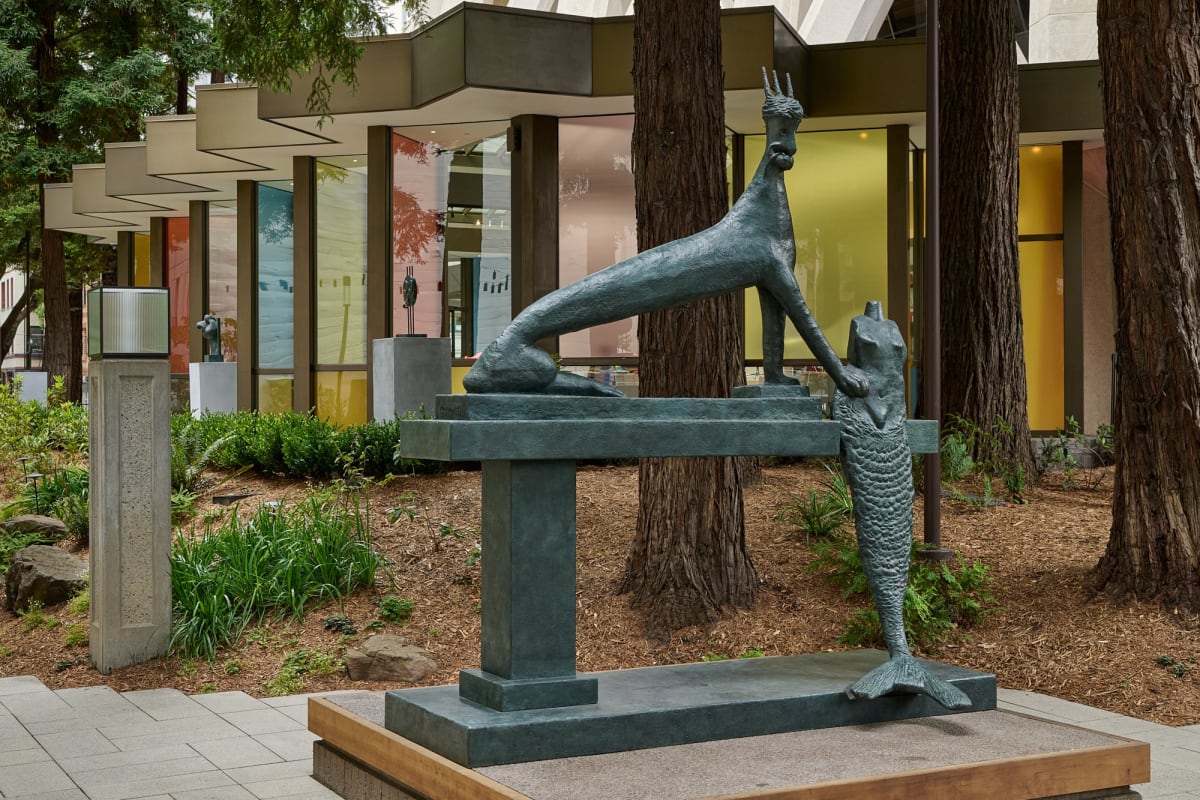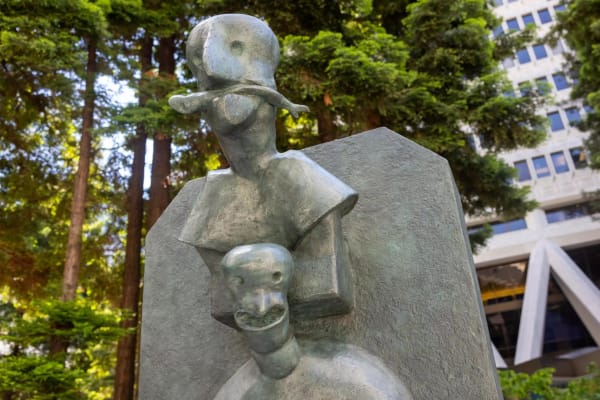Max Ernst (Brühl, Germany, 1891 – Paris, France, 1976) was a pioneer of the Surrealist and Dada movements of the 20th century. Ernst used a variety of mediums—painting, collage, printmaking, sculpture, and various unconventional drawing methods—to give visual form to both personal memory and collective myth. Though he had no formal artistic training, his experimental attitude toward the making of art resulted in his invention of frottage—a technique that uses pencil rubbings of textured objects and relief surfaces to create images—and grattage, an analogous technique in which paint is scraped across canvas to reveal the imprints of the objects placed beneath. By combining illusionistic technique with a cut-and-paste logic, he made the incredible believable, expressing disjunctions of the mind and shocks of societal upheavals with unsettling clarity. For Ernst, art was a device by which the nightmarish realities of the world could be reflected.
Max Ernst was born in Brühl on April 2, 1891. From 1910 to 1914, he studied at the University of Bonn, where he met the art historian Luise Straus. They married in 1918 and two years later their son Jimmy Ernst was born. During World War I, the artist was recruited for military service, which had a profound impact on his worldview and art. After his return, he founded the Cologne Dada movement together with Hans Arp and Johannes Theodor Baargeld—partly as a direct reaction to the cruelties of the war.
In 1922, Ernst left his family and moved to Paris to improve his artistic skills. In 1927, after divorcing Luise Straus, he married the painter Marie-Berthe Aurenche. Ernst quickly became one of the central members of the Surrealist circle centered around André Breton. Ernst was the first painter ever to be immortalised in the First Manifesto of Surrealism in 1924.
The takeover by the the National Socialists in 1933 had a drastic impact on Max Ernst's life and work, even though he was in France at the time. In 1937, he met the artist Leonora Carrington, who soon became his partner. In the same year, Ernst's works were confiscated by the Nazis and mockingly displayed at the propaganda exhibition “Entartete Kunst” (Degenerate Art). In 1939, he was interned several times as an ‘enemy foreigner’ in camps such as Camp de Milles near Aix-en-Provence.
Ernst was able to escape from captivity several times, thanks to the support of his friend Paul Éluard, among others. With the help of art collector Peggy Guggenheim and the refugee aid organisation Emergency Rescue Committee led by journalist Varian Fry, he finally managed to flee to New York in July 1941. Guggenheim and Ernst married shortly afterwards. During a research assignment for her planned exhibition “31 Women,” Max Ernst met the artist Dorothea Tanning. He left Guggenheim and started a relationship with Tanning. In 1946, the couple left New York and moved to a hill near the town of Sedona in the Arizona desert.
After World War II, the two returned to Europe several times until they finally moved to France in 1953. One year later, Max Ernst received the Grand Prize at the 27th Venice Biennale for his artistic oeuvre, which brought him international recognition.
Max Ernst died in his studio flat in Paris on April 1, 1976, one day before his 85th birthday.
-

Roborant Review | Max Ernst, Transamerica Redwood Park, Gallery Wendi Norris
December 10, 2025By Sienna Freeman Upon crossing through the black wrought-iron gates of San Francisco's Transamerica Redwood Park, one encounters an unexpected urban sensorial cocktail: the freshness...Read more -

Art Bae | Like A Summer Thursday: An Alternative Art Loop
October 17, 2025By Janie Perez-Radler Slip back into the city and under the primordial trees at the recently renovated Transamerica Redwood Park. Twelve bronze sculptures by Max...Read more -

San Francisco Chronicle | Max Ernst sculptures bring surreal touch to Transamerica Pyramid
Max Ernst at Transamerica Pyramid Center August 1, 2025By Tony Bravo If you’re in the Jackson Square neighborhood, be sure to make a stop at the Transamerica Pyramid Center’s Redwood Park. Among the...Read more -

San Francisco Standard | Go Here Now: Transamerica Pyramid’s secret garden just got famed surrealist’s sculptures
Max Ernst at Transamerica Pyramid Center July 21, 2025By Sam Mondros Max Ernst’s fantastical bronze works take up residency in an oasis of redwoods in downtown San Francisco. Amid the steel canyons of...Read more






